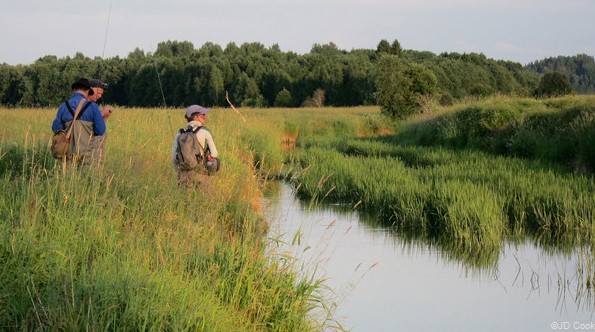Ian ThompsonMy mother was born in 1929 in the Baltic republic of Estonia. For more than two centuries, shadowy, seagirt Estonia had been part of Tsarist Russia, but where exactly it was on the map of Europe remained vague to me until I decided to go fishing there. Tourist brochures spoke of the most beautiful trout fishing in former Soviet lands, the forests a wild, untamed glory. A sense of security and summer enchantment must have pervaded my mother’s Baltic childhood. With her father she used to go fishing in the lakes and rivers near the Estonian capital of Tallinn. With a pike snapping at the end of their line they felt blissfully free; there was little sense of the tragedy that lay ahead.
In 1940 Estonia was invaded by Stalin and the following year by Hitler. Then, in 1944, the Soviets returned. Before the Red Army could seize what remained of the family property, my mother escaped to London by way of displaced persons’ camps. She was 18 when she reached London after the war’s end. All she had with her was a suitcase containing a change of clothes and a photograph of Tallinn with its medieval churches.
Armed with rods, waders and boxfuls of flies, I flew to Tallinn with three friends from England: Matthew, Ken and Jonnie. Keen fly-fishers, they understood the thrill of the fish hunt, and Estonia turned out to be a magnificent hunting ground for us. At Tallinn airport we were met by our ghillie, Vahur Mäe, whose job was to help us land fish and advise on which flies to use. Vahur knew the lakes and rivers of his native Estonia intimately. We piled into his car and set off in the direction of the university town of Tartu, near the Russian frontier.
http://www.ft.com/cms/s/0/2125... 
